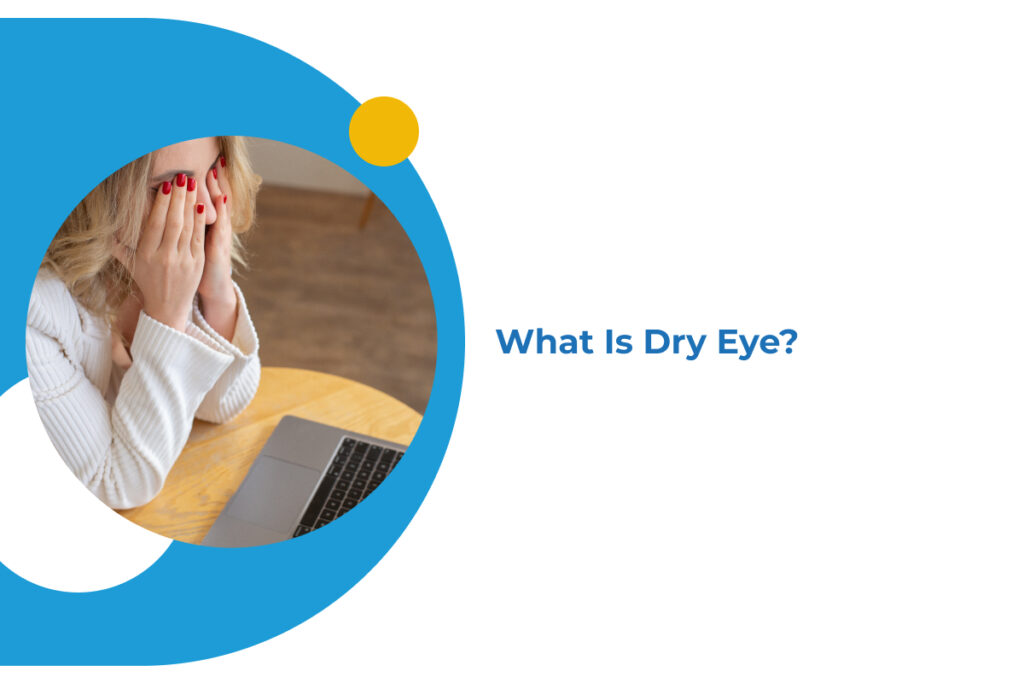Symptoms, Causes, and How Northland Eye Care Can Help
Dry eye is a common but often misunderstood condition that can affect people of all ages. It happens when your eyes can’t produce enough tears or when the tears you do produce aren’t of the right quality to keep your eyes comfortably lubricated. Tears may seem like a small detail, but they’re essential for clear vision, eye comfort, and protecting the surface of your eye from irritation.
One of the most frequent causes of dry eye is Meibomian Gland Dysfunction (MGD). The meibomian glands in your eyelids release a thin layer of protective oil into your tears. This oil slows evaporation, keeping your eyes from drying out too quickly. When these glands don’t function as they should, your tears evaporate too quickly, leaving your eyes feeling dry, scratchy, and irritated.
What Does Dry Eye Feel Like?
Dry eye symptoms can vary from person to person, and they don’t always feel the same every day. Some people experience mild irritation, while others deal with discomfort that significantly impacts their daily life.
Common sensations include:
- A gritty, sandy feeling – Like something is stuck in your eye, even though nothing is there.
- Burning or stinging – A persistent irritation that may get worse in dry environments or after long periods of screen time.
- Eye fatigue – Your eyes may feel heavy or tired, especially by the end of the day.
- Redness – Irritation can cause the whites of your eyes to look bloodshot or inflamed.
- Watery eyes – Surprisingly, excess tearing can be a sign of dry eye. Your eyes may overproduce watery tears in response to dryness, but these tears lack the oils needed to stay on the eye’s surface.
- Fluctuating vision – Your vision might be clear after you blink, but then quickly blur again as the tear film breaks up.
If you wear contact lenses, dry eye can make them feel less comfortable and may even shorten the amount of time you can wear them each day.
Why Dry Eye Happens
In addition to MGD, dry eye can be triggered or worsened by:
- Aging – Tear production naturally declines over time.
- Hormonal changes – Especially common during menopause.
- Environmental factors – Dry climates, wind, air conditioning, and heating systems.
- Lifestyle habits – Prolonged screen use can reduce blinking, leading to faster tear evaporation.
- Certain medications – Such as antihistamines, blood pressure medications, and antidepressants.
Because there are so many possible causes, it’s important to have a thorough evaluation by an optometrist to determine the root of the problem.
How Northland Eye Care Treats Dry Eye
Our clinic offers advanced, comfortable dry eye treatment options to help restore tear quality, improve comfort, and protect your long-term eye health.
LipiFlow® Thermal Pulsation
LipiFlow is a proven treatment for Meibomian Gland Dysfunction, the leading cause of dry eye. Using gentle heat and therapeutic massage, LipiFlow works to unblock and restore normal function to the meibomian glands. The procedure is quick, comfortable, and performed in our office. Many patients experience noticeable relief within days, with results that can last for months.
Light-Based Therapies
We also provide light-based treatments such as OptiLight® (IPL), Eye-Light® (IPL), and Low Level Light Therapy (LLLT). These therapies target inflammation around the eyes, which is a key contributor to gland dysfunction. Sessions are non-invasive, effective, and can be completed in as little as 20 minutes, with no downtime afterward.
By addressing the root causes of dry eye, these treatments help improve tear quality, reduce discomfort, and protect your vision.
Why Professional Treatment Matters
Over-the-counter artificial tears can offer temporary relief, but they often don’t solve the underlying problem. If your dry eye is caused by blocked meibomian glands or inflammation, lubricating drops alone won’t restore proper tear function.
At Northland Eye Care, we take a personalized approach. Your optometrist will:
- Assess your tear quality and gland function using advanced diagnostic tools.
- Identify contributing factors such as environmental triggers, medications, or health conditions.
- Recommend a tailored treatment plan that may include in-office procedures, at-home therapies, and lifestyle adjustments.
Living Comfortably With Dry Eye
While dry eye can be persistent, the good news is that with the right care, you can significantly reduce your symptoms and protect your long-term eye health. Many patients find that once their tear film is restored to a healthier balance, they can return to activities they enjoy, whether that’s reading, working at a computer, or wearing contact lenses comfortably again.
If you’ve been experiencing red, irritated, or watery eyes, or if your vision has been fluctuating throughout the day, it’s worth booking an assessment. The sooner dry eye is diagnosed and treated, the sooner you can get back to seeing and feeling your best.
Book your dry eye consultation with Northland Eye Care today and take the first step toward clearer, more comfortable vision.

